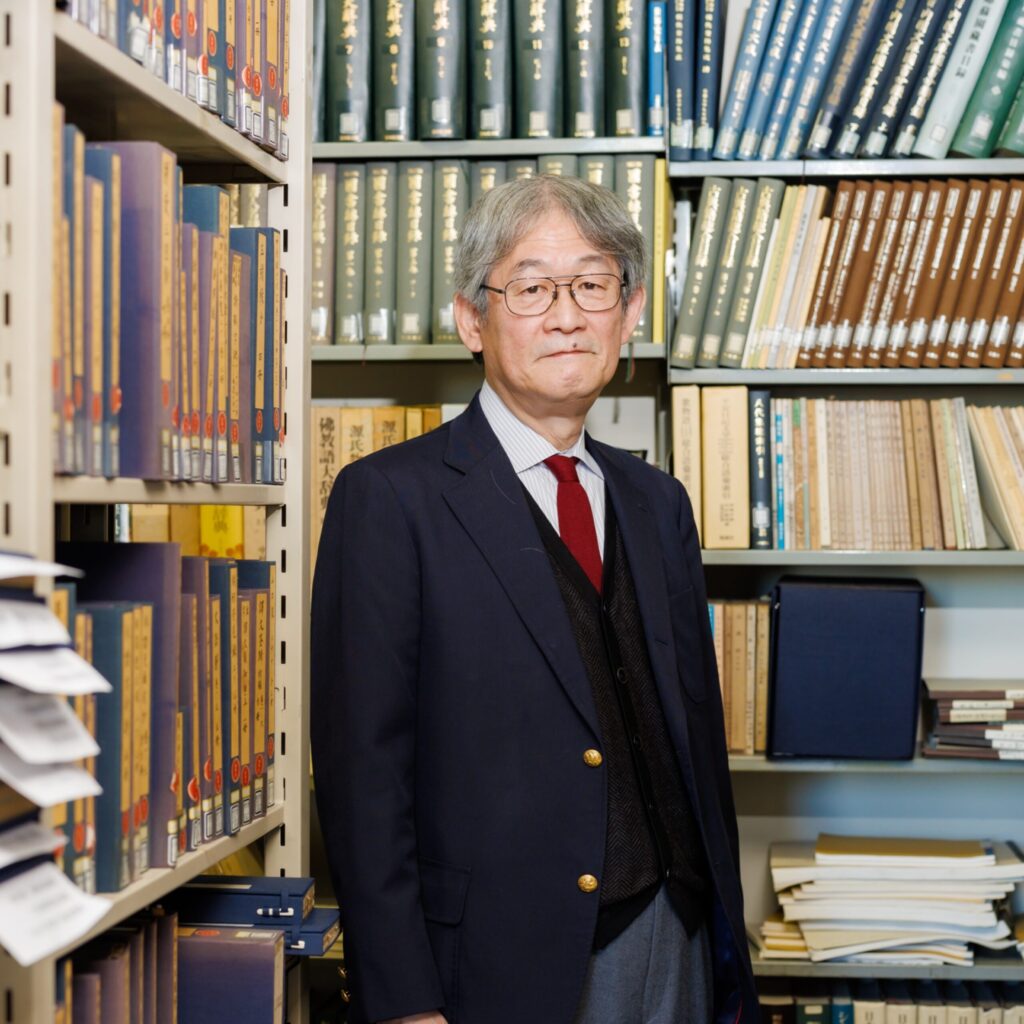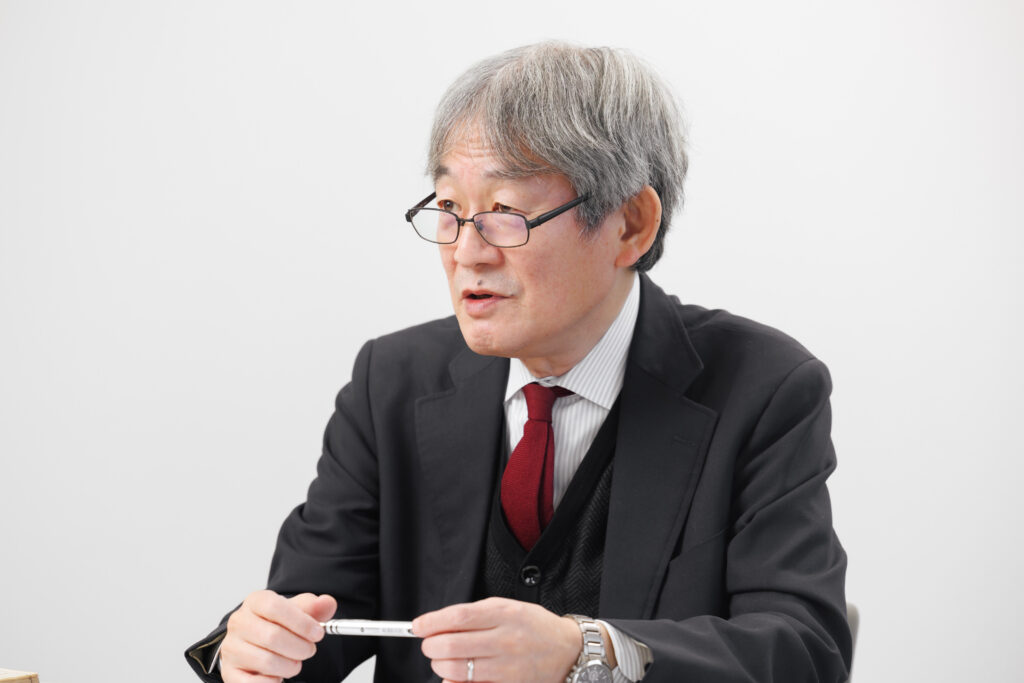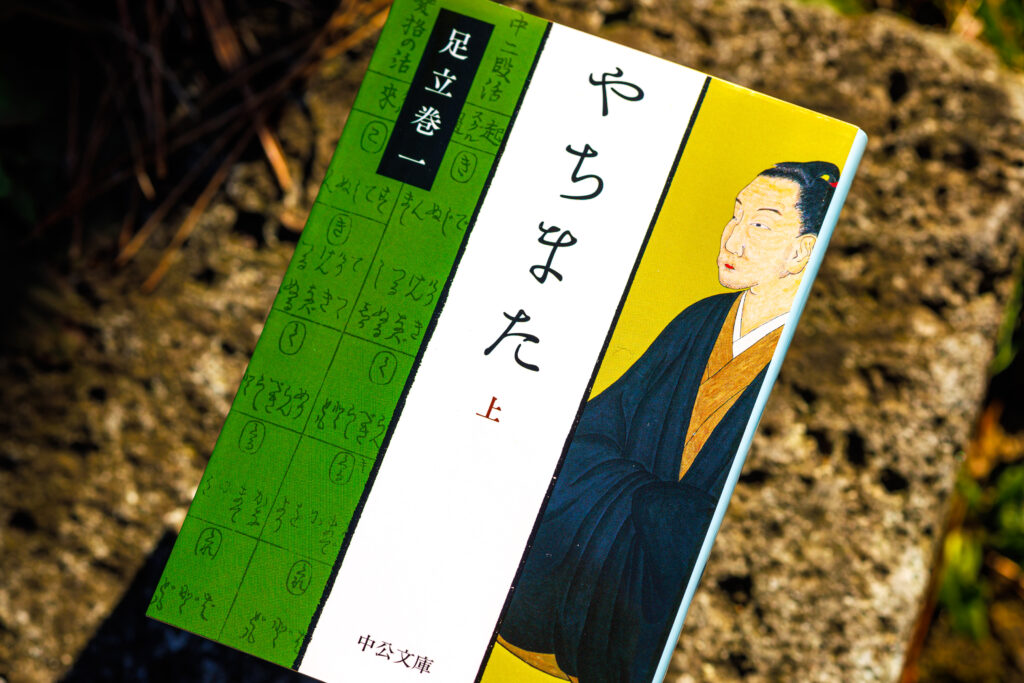
Professor Hattori of the Faculty of Humanities researches the development of the Japanese language and its major reforms, such as the Meiji-period Genbun Itchi movement to write Japanese in the spoken vernacular. He talks about the difficulties the Genbun Itchi movement faced at the time, the roles played by modern Japanese language, and the significance for today.
The basics of the modern Japanese language that we use normally were set out about 110 years ago. Until the early Meiji period, the written language was quite separate to the spoken language: it was based on classical Chinese or pseudo-classical texts from the Heian period.
Later, the Genbun Itchi movement arose in order to get the spoken and written languages to match. By the latter half of the Meiji period, texts in modern Japanese, close to the spoken language and in accordance with the grammar of standard Japanese, had appeared. My research is based around finding out how this modern Japanese was formed.
The path to modern Japanese was by no means smooth, and while it may be easy enough to assume it follows the grammar of spoken Japanese, it was a case of trial and error to establish the standard dialect, including editing grammar books in the vernacular or surveying dialects from around the country.
For example, a primary school reader used from 1904 has the past negative as “-senanda” and it was not actually unified as the contemporary “-shinakatta” until a state-specified textbook that came into use in 1910.
A critical biography of a scholar of National Learning (Kokugaku) led to becoming a researcher

I developed an interest in the world of words in high school. Initially, I intended to look into Nara-period language to see what the roots of the Japanese language were, but after I started university, I was lured by the language of the Meiji period, and the direct roots of today’s language. That was when I came across a critical biography of Motoori Haruniwa.
Haruniwa was the man who created the template for the verb conjugation tables we use today. The author, Ken’ichi Adachi, took forty years to complete this critical biography. I was not just impressed by Haruniwa’s life: what resonated with me was how fascinated Adachi was with the appeal of grammatical research, and I felt I wanted to get into the same field. That was when I was moving towards the Meiji period, so I wanted to unearth the accomplishments of someone who took on the Japanese language.
My main research method is to search for grammar books and magazines and so on related to my theme, and then sit down and read them. There are a lot of Meiji period texts, so it’s very hard to find in this vast volume the sections that are necessary for my theme. For example, there are more than a hundred books on grammar alone. When I was a student, I would bury myself in the library with these books and just copy them out.
I want people to be more interested in the history and formation of Japanese
At the moment, along with the Meiji-period Genbun Itchi and the history of grammatical research, I am working on Dutch language learning during the Edo period.
For example, the “Kaitai Shinsho” (New Text on Anatomy) was translated into Japanese in an era when there were no proper Dutch-Japanese dictionaries or grammar books, but later, books like this began to be edited by translators and scholars of European studies. Through the work of comparing Dutch and Japanese, I am becoming strongly aware of the characteristics of Japanese, and that helps with my research of the Meiji period.
Modern Japanese is a common language that works nationwide, a foundational part of our social infrastructure, and has contributed greatly to the development of communication. Media changes like the development of information communication technology may cause the Japanese language to change in the future, but its importance will not change.
Because without the Japanese language, we would not be able to think or express ourselves freely. Which is why I want more people to develop an interest in the history of Japanese, to know that today’s language is built on the efforts of our forebearers. I hope to continue to pass on the history and fascination of the Japanese language through classes and so on.
The book I recommend
“Yachimata”(The Many-Forked Path)
by Ken’ichi Adachi, Chuokoron-shinsha

This was what spurred me to get into Japanese language research. Motoori Haruniwa, the eldest son of Motoori Norinaga, was a blind scholar of National Learning. With his family’s help, he compiled his revolutionary research on Japanese verb conjugations into “Kotoba no Yachimata,” “The Many-Forked Paths of Words”. Adachi spent half his lifetime studying Haruniwa, creating this critical biography.
-
Takashi Hattori
- Professor
Department of Japanese Literature
Faculty of Humanities
- Professor
-
Graduated from the Department of Japanese Literature, Faculty of Humanities at Sophia University, received an M.A. in literature, then withdrew from Sophia’s doctoral program of Japanese Literature after completing the course. After working as a lecturer at the Faculty of Humanities, Fukuoka Jo Gakuin University then as Assistant Professor in the Sophia University Faculty of Humanities, he was appointed to his current post in 2007.
- Department of Japanese Literature
Interviewed: December 2022